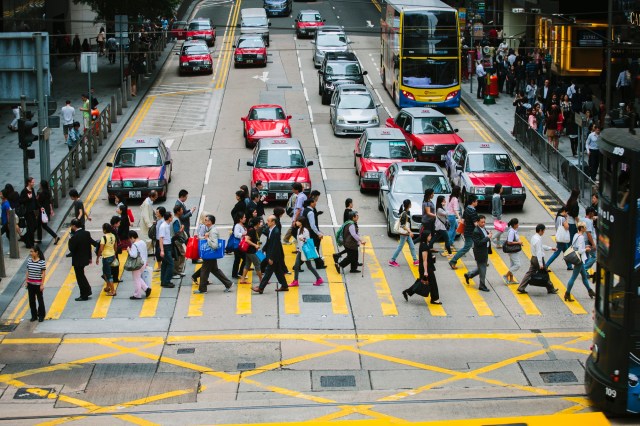Credit: Getty / urbancow

They don’t even exist yet as a commercial product, but the backlash against driverless cars is now fully underway.
Earlier this year, a self-driving vehicle hit and killed a pedestrian in Tempe, Arizona. There was a back-up driver in the driving seat, but the car – part of a testing programme – was in autonomous mode at the time.
It was a tragic demonstration of the current limitations of the technology. Writing for Bloomberg, Jeremy Khan says that timelines for the development and commercialisation of AV (autonomous vehicle) technology are slipping – as the full complexities of coping with an unpredictable driving environment become clear.
But what if the driving environment could be simplified? Khan focuses on comments made by Andrew Ng – a leading figure in the industry:
“‘What we tell people is, ‘Please be lawful and please be considerate,’’ says Andrew Ng, a well-known machine learning researcher who runs a venture fund that invests in AI-enabled companies, including self-driving startup Drive.AI. In other words: no jaywalking.’”
Certainly, it would be easier for the AV algorithms to identify pedestrians if they only crossed the road at designated and clearly marked crossings. But why should pedestrians modify their behaviour to make life easier for the AV developers?
Pedestrians have had to make allowances for other, more dangerous forms of traffic ever since the taming of the horse. In the modern era, we’ve been slaughtered in our millions by the non-driverless car and even the bicycle is a growing menace (though a rarely fatal one). So, what’s one more reason to mind our step?
“Ng argues that humans have always modified their behavior in response to new technology, especially modes of transportation. ‘If you look at the emergence of railroads, for the most part people have learned not to stand in front of a train on the tracks,’ he says… Self-driving cars, he says, are no different.”
I wonder if we might not come to see the segregation of traffic as a feature and not a bug of AV technology. Imagine a future in which pedestrians, cyclists and users of motorised transport all had ample and, for the most part, separate space to make their way around our towns and cities.
How might that be possible? Take a look at this – it’s a visual demonstration of just how much extra road space cars need to transport a given of people compared to buses or bicycles. The basic spatial inefficiency of the car itself is compounded by low occupancy rates (an average of about 1.6 people per car in the UK). Then there’s the need to park the things for most of the day (average occupancy rate roughly zero) – taking up even more space on our roads and off them.
In theory, driverless cars could free up a lot of that space – by reducing driving distances between cars, reducing the need for parking spaces in city centres and facilitating car sharing schemes. However, this developmental pathway requires AV tech to be perfected first – in a complex, urban driving environment.
However, there is a plan B – in which the B stands for ‘bus’. We could already save the space currently wasted by cars if more people were willing to use public transport instead – which they might do if it were much cheaper and much faster.
Driverless bus technology could make that possible. With no drivers or conductors needed, staffing costs and constraints are greatly reduced – making smaller vehicles serving a larger number of routes economically viable. Compared to a new tram or train line, the necessary infrastructure (i.e. a simple road as opposed to tracks, junctions, signals etc) is affordable. Furthermore, even basic automation enables precision driving on narrow lanes, allowing the width required for dedicated, fenced-off, routes to be minimised. Routes free from all other kinds of traffic would greatly increase the speed and reliability of the services – and therefore their acceptability to the public as a replacement for their cars. And, of course, with a simplified driving environment we don’t have to wait for the most advanced level of automation to be developed.
As I’ve argued before, it would be easier to implement AV-based transit and traffic segregation in a new town or large-scale urban extension – where dedicated routes can be designed-in from the outset. However, it could be done in established communities too – with routes carved out of existing transportation corridors.
Full implementation of ‘plan B’ would require vision, courage and meticulous planning, but the prize would be an unpolluted, uncongested urban environment in which one could walk or cycle literally free from the fear of death.










Join the discussion
Join like minded readers that support our journalism by becoming a paid subscriber
To join the discussion in the comments, become a paid subscriber.
Join like minded readers that support our journalism, read unlimited articles and enjoy other subscriber-only benefits.
Subscribe